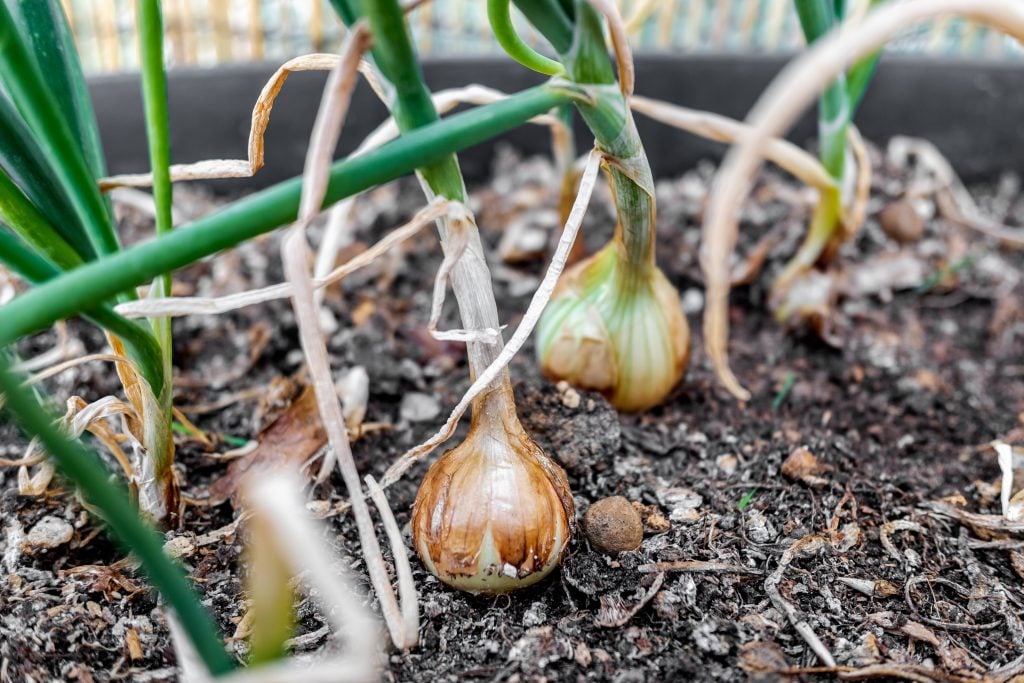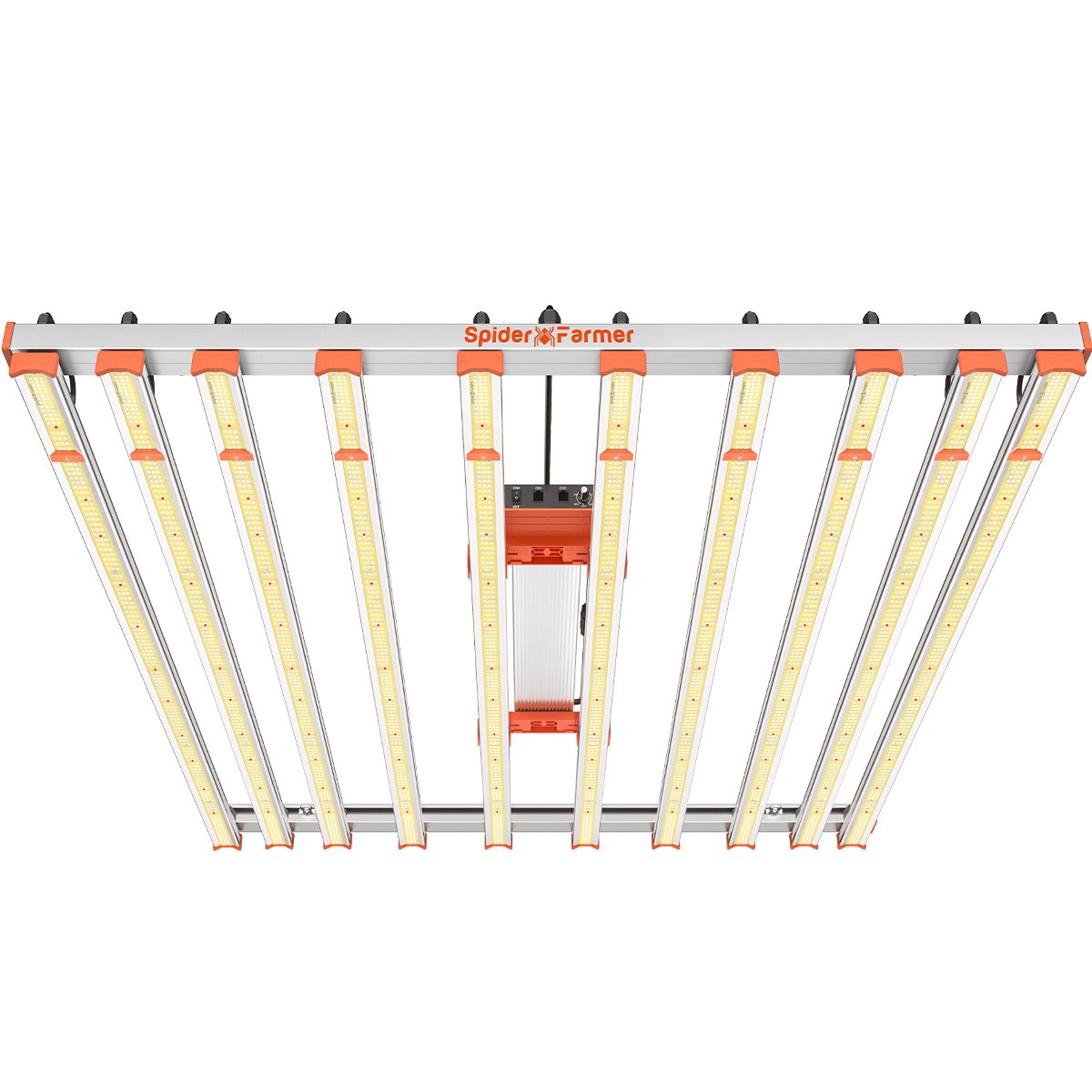Onions are a staple in cuisines worldwide, cherished for their distinctive flavor and versatility in cooking. They are not only prized for their culinary uses but also for their nutritional benefits, as they are rich in vitamins, minerals, and antioxidants. This humble vegetable, easy to grow and store, is among the best options for home growers. While it works to grow onions from seeds, an easier and quicker way is to grow them from small onions (sets). How to plant onion sets on your own? This guide is designed to help beginners and seasoned gardeners alike in growing healthy, vibrant onions right in their backyard.
Table of Contents
Selecting the Right Onion Sets
The first step in your onion planting adventure is to select high-quality onion sets. Opt for firm, small bulbs that show no signs of sprouting or mold. Some common onion sets include:
- Yellow Onions: A classic choice, known for their all-purpose use in cooking. Varieties like ‘Yellow Sweet Spanish’ and ‘Copra’ are popular for their sweet, robust flavor.
- Red Onions: ‘Red Burgundy’ and ‘Red Wing’ are excellent choices. They’re perfect for fresh use in salads and sandwiches due to their mild, sweet flavor.
- White Onions: Varieties like ‘White Sweet Spanish’ and ‘Sierra Blanca’ are known for their milder flavor, ideal for salsa and Mexican cuisines.
- Vidalia Onions: Famous for their exceptionally sweet taste, Vidalia onions are perfect for those who prefer a milder, sweeter onion. They’re great raw in salads or caramelized.
- Walla Walla Onions: Another sweet variety, these onions are large and have a deliciously mild flavor. They’re excellent for eating raw or cooked.

Preparing Your Garden
A well-prepared garden is key to successful onion growth. Choose a spot in your garden that receives ample sunlight and has well-drained soil. Onions have a relatively small root system, so enriching the soil with abundant organic matter is crucial. Incorporating a bucket of garden compost or well-rotted manure per square meter or yard significantly enhances soil fertility, structure, and moisture retention.
Additionally, onions prefer slightly acidic to neutral soil, ideally around pH 6.5. If your soil is too acidic, you can amend it by adding lime during the autumn or winter months to adjust the pH level.
Planting Time: When to Plant Onion Sets
In most regions, including the United States and Europe, onion sets are typically planted in early spring, as soon as the ground can be worked. This is often around late February to mid-April. During this time, you have a variety of options, such as ‘Red Baron’, ‘Sturon’, and ‘Hercules’. These spring-planted onions will generally be ready for harvest by late summer.
For regions in the Mediterranean Climates (such as Southern California or parts of Southern Europe), onion planting can occur in late autumn or early winter, as the mild winters allow for a longer growing season without the threat of a hard freeze. For autumn planting, opt for varieties that are more cold-tolerant, like ‘Autumn Champion’ and ‘Electric’. These can be planted from October through to March.
Planting in autumn has the advantage of utilizing garden space that would otherwise remain unused, and it means one less task to do in the spring. Additionally, autumn-planted sets often mature a few weeks earlier than those planted in spring, typically yielding a harvest in early summer.
Sowing Onion Sets
With the soil and onion sets prepared, planting onions is a simple process:
- Plant each set about 1-2 inches deep into the soil.

- Maintain a spacing of 4-6 inches between each set to allow adequate room for growth.
- Arrange your onion sets in rows, keeping each row about 12 inches apart.
Watering and Fertilizing
Consistent watering is vital, especially during the early stages of growth and in dry weather. Ensure adequate watering, especially in periods of low rainfall, and be vigilant in removing any emerging flower heads, as they can redirect the plant’s energy away from forming bulbs to producing seeds.
In the springtime, enhance the growth of autumn-planted onion bulbs by applying a fertilizer high in nitrogen. Since onions have shallow root systems, it’s advisable to hand weed rather than use a hoe between the rows to prevent root disturbance.
Monitoring Growth and Health
Regularly check your onions for signs of healthy growth, such as vibrant green shoots. Address any issues like yellowing leaves or stunted growth promptly to ensure the health of your plants.

Harvesting Your Onions
Onions are generally ready to be harvested in late summer, a sign of which is when their green tops start to fall over and turn brown. This indicates that the onions have completed their growing cycle and are now ready to be picked.
To harvest, carefully uproot the onions from the soil using a gentle pulling motion. It’s important to be gentle to avoid damaging the bulbs. If the soil is hard, you might need to use a gardening tool like a fork to loosen the soil around the onions before pulling them out.
Common Problems When Growing Onion Sets
Growing onion sets can sometimes present challenges. Here are some common issues and how to address them:
Onion Fly Larvae: One of the first signs of an onion fly infestation is drooping yellow foliage. Unfortunately, by the time these symptoms are visible, the larvae may already be causing significant damage to the bulbs. To combat this, consider growing your onions under protective fleece in the following year.
Onion Neck Rot: This issue is more prevalent during wet summers. Symptoms include brown marks on the onion and a fluffy grey mold around the neck of the bulb. To minimize the risk of onion neck rot, ensure that you don’t plant the sets too closely together. This overcrowding can create a humid environment conducive to the development of the disease. Also, it’s crucial to thoroughly dry your onions before storing them. Proper drying helps to prevent the onset of rot, as the disease thrives in moisture-rich environments.
Downy Mildew: This fungal disease causes fluffy white growth and yellow patches on the leaves. It thrives in cool, moist conditions. Good air circulation around plants and avoiding overhead watering can help prevent it. Rotate your onion crops each year to reduce the risk.
Growing onions from sets is a simple and rewarding process. With these tips and techniques, you’re well on your way to enjoying your own homegrown onions.
FAQs about How to Plant Onion Sets
- Can you plant onion sets straight into the ground?
Yes, planting onion sets directly into the ground is actually the most common method for growing onions. Before planting, ensure that the soil is well-prepared – it should be loose, well-drained, and enriched with organic matter like compost. Plant the sets with the pointed end facing upwards, and bury them so that the tip is just at soil level.
- How do you plant onion sets in rows?
- Prepare the Garden Bed: Loosen the soil in your garden bed and add any needed amendments like compost or well-rotted manure.
- Lay Out the Rows: Mark out your rows, maintaining a distance of about 12 to 15 inches apart for adequate air circulation and growth space.
- Place the Onion Sets: In each row, place the onion sets about 4 to 6 inches apart. This spacing allows each onion bulb to develop fully without competing for nutrients and space.
- Plant the Sets: Plant the onion sets about 1 to 2 inches deep with the pointed end up.
- Firm the Soil and Water: After planting, gently firm the soil around the sets and water them well.











Leave a reply
You must be logged in to post a comment.